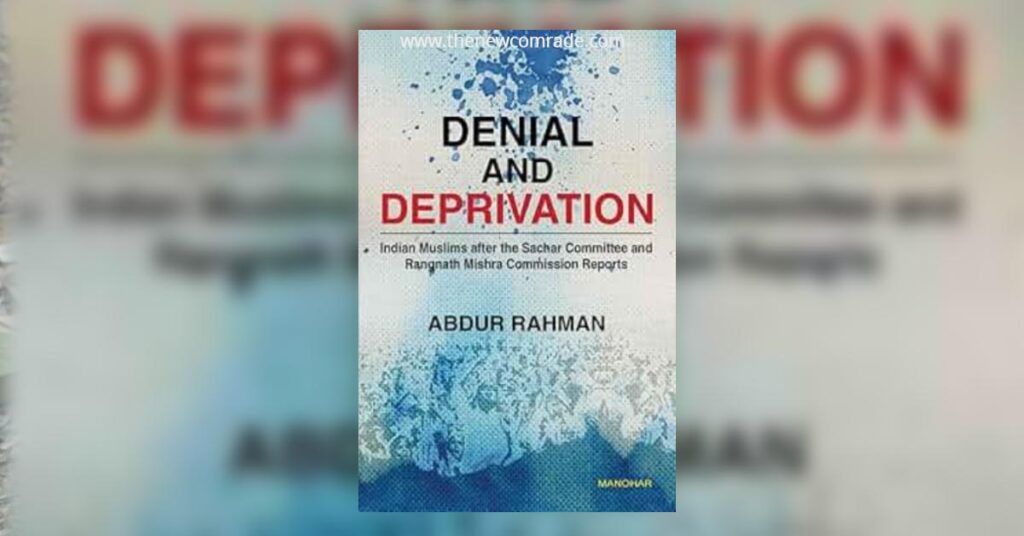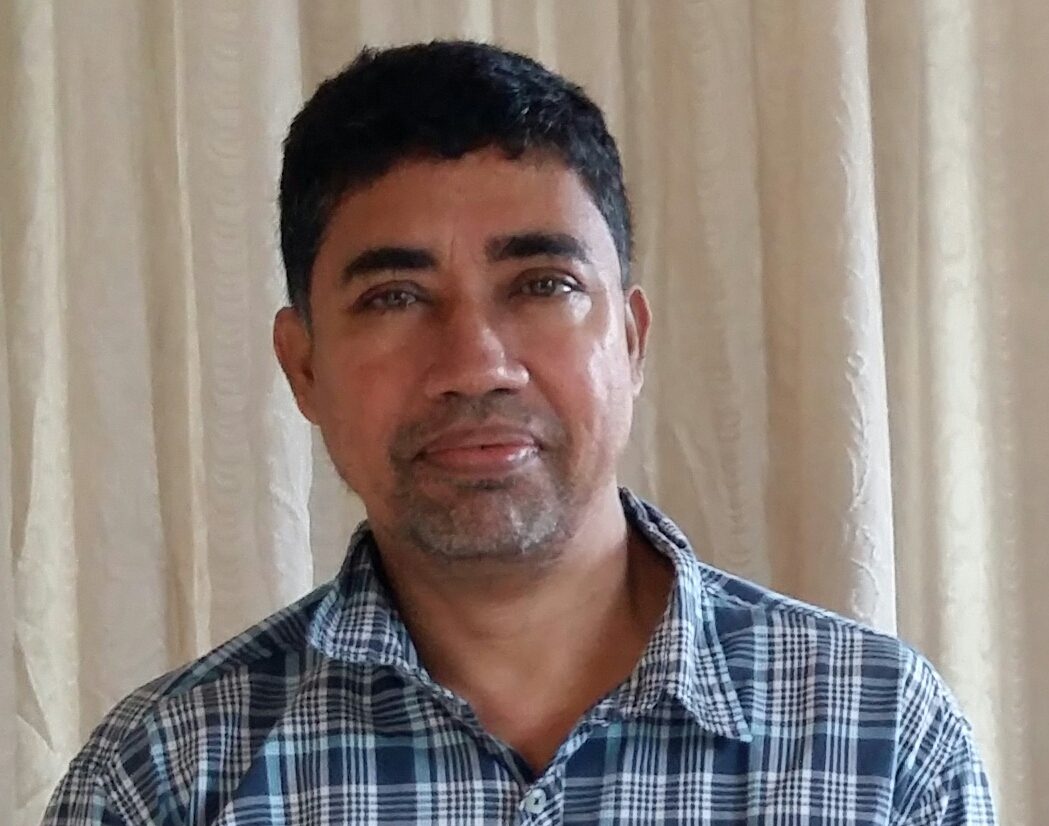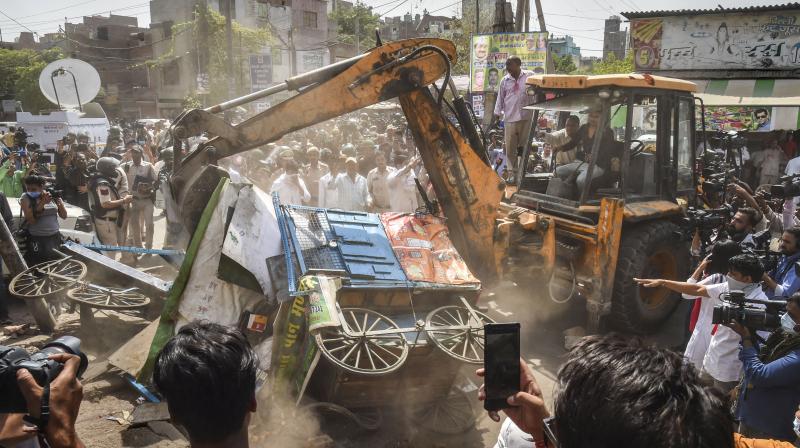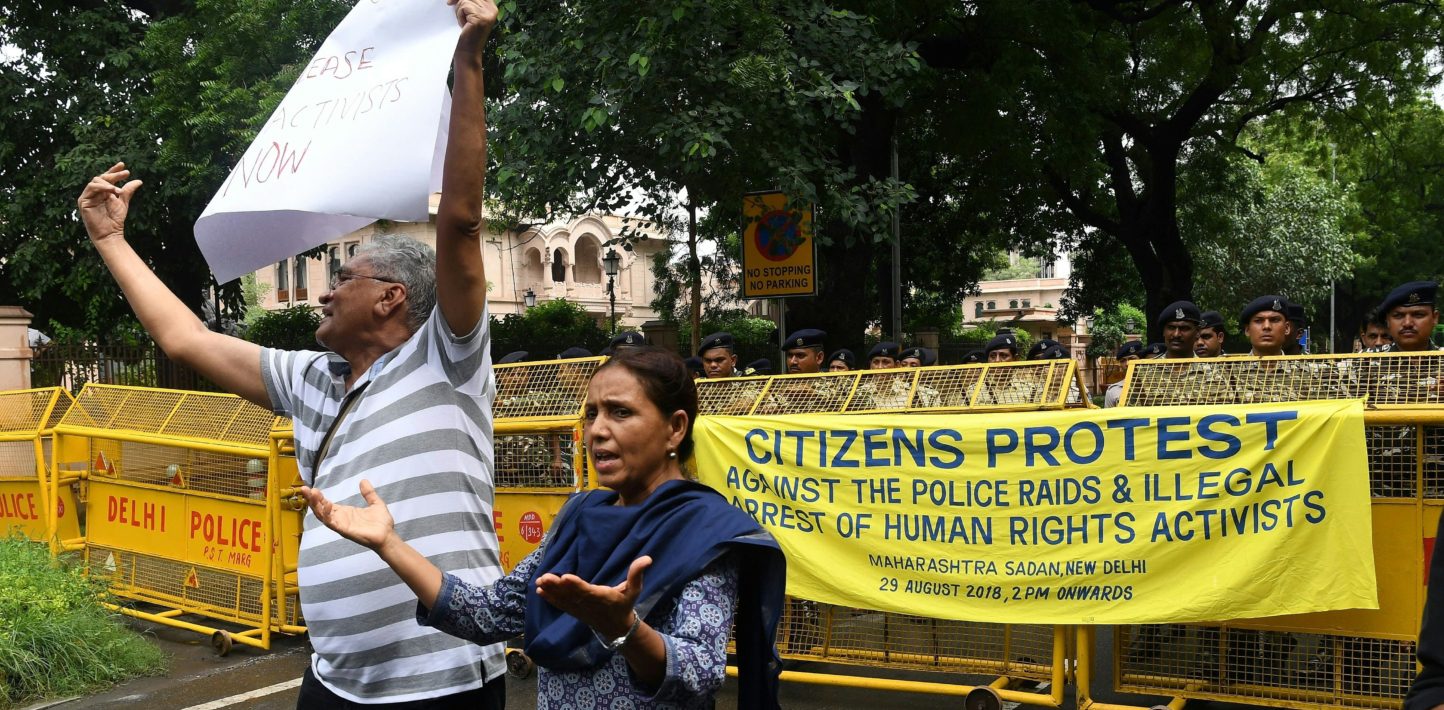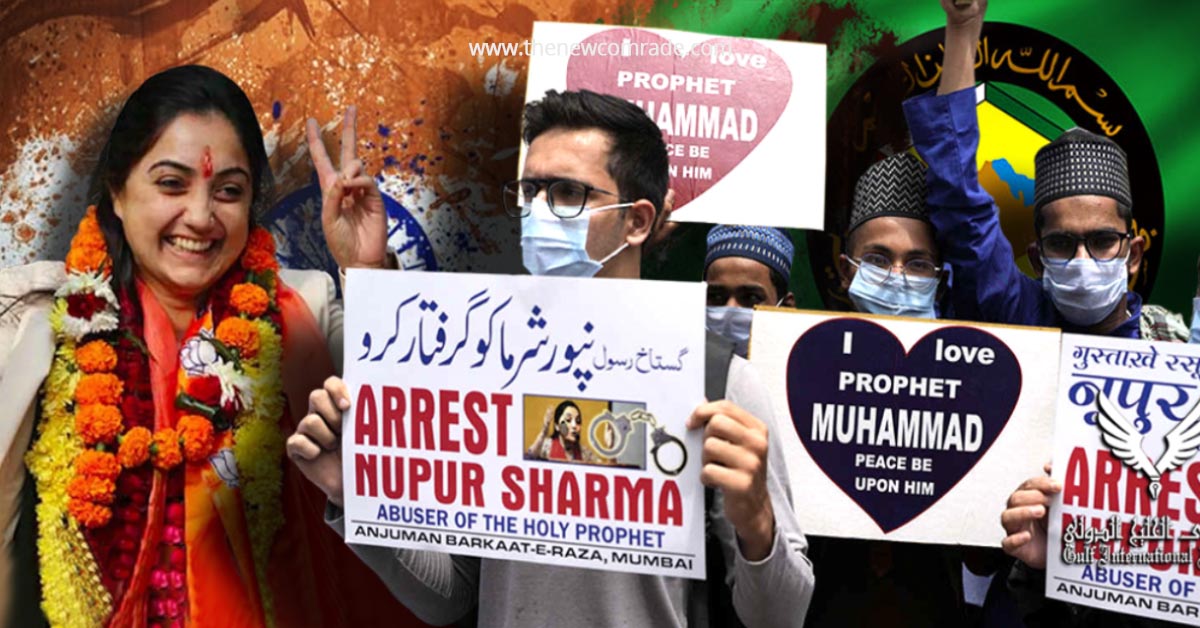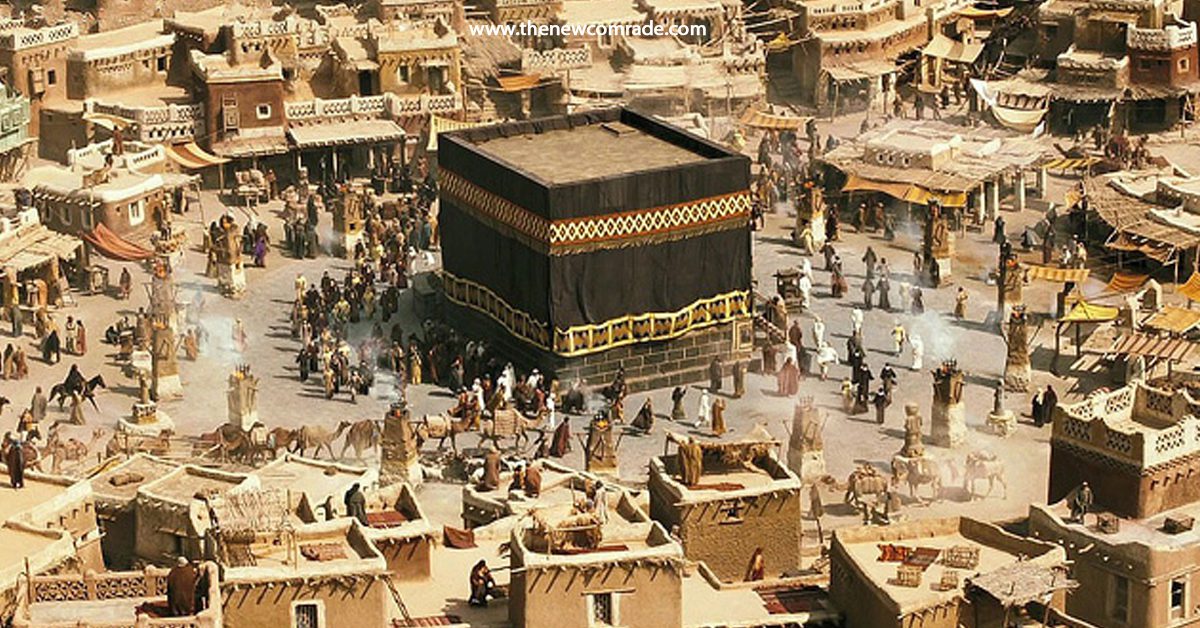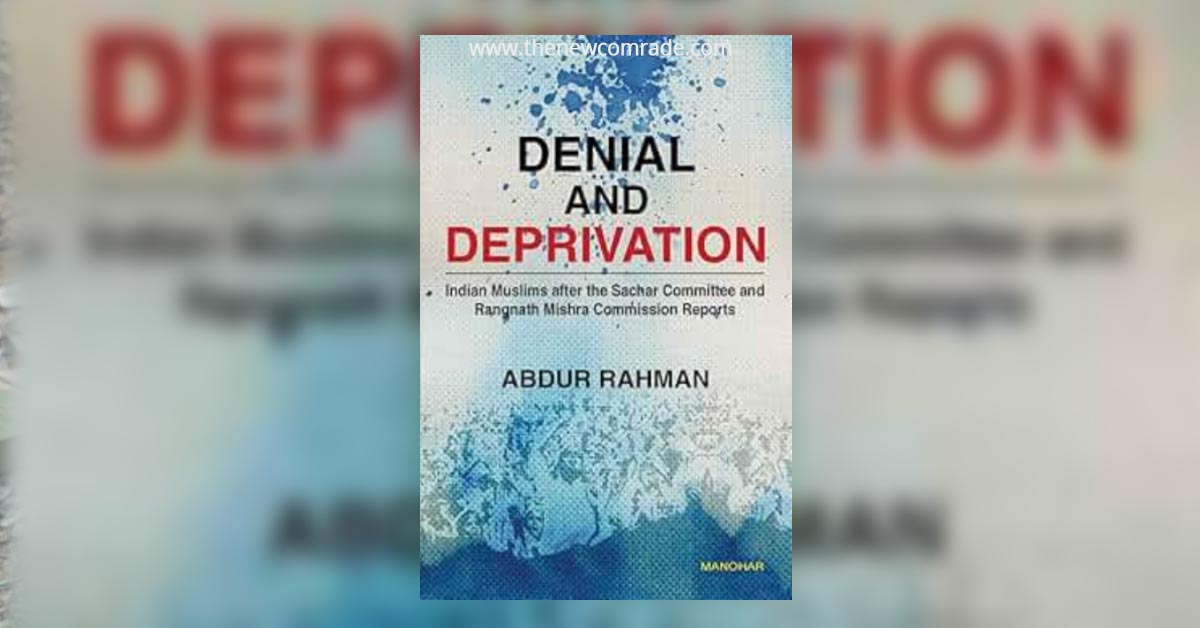Abdur Rahman’s Denial and Deprivation: Indian Muslims After the Sachar Committee and Rangnath Mishra Commission Reports stands as a formidable and meticulously researched scholarly work, delivering a stark, evidence-backed indictment of the Indian state’s persistent failure to address the systemic socio-economic and political marginalisation of its largest socio-religious minority community. The book’s central thesis, extensively documented, posits that despite the damning evidence and clear recommendations presented by the Sachar Committee Report (2006) and the Rangnath Mishra Commission Report (2007), Muslim Indians have faced a profound “denial” of justice and opportunity, leading to their continued, and in some aspects worsened, “deprivation.” Rahman, a former state bureaucrat of India, viz. an Indian Police Service (IPS) officer, leverages his insider understanding of state mechanisms and academic rigour to dissect this chasm between official diagnosis and meaningful remedial action. The depth of this research is a testament to his collaborative and expert-informed approach, as he acknowledges in the preface: “The process of writing the book brought me closer to some of India’s finest academicians, thinkers, authors, activists, such as Arundhati Roy, Syed Zafar Mahmood, Abusaleh Shariff, Abdul Shaban, Sunil Sardar, Braj Ranjan Mani, Dilip Ghavde, Advocate Motahar Hussain, John Dayal, Akhtarul Wasey, to name just a few” (p.7-8).
Rahman’s analysis is firmly anchored in the findings of these two pivotal reports. The Sachar Committee Report, a comprehensive socio-economic audit, shattered the pervasive myth of Muslim “appeasement” by unequivocally demonstrating that Indian Muslims lagged significantly behind the national average—and often even Scheduled Castes and Scheduled Tribes—across a spectrum of development indicators. These included education, with lower literacy and high dropout rates; employment, marked by severe underrepresentation in government and organised private sector jobs; access to bank credit, often hindered by discriminatory practices; and basic civic amenities, etc. The report also highlighted their stark underrepresentation in political and administrative spheres. Building upon Sachar’s findings, the Rangnath Mishra Commission Report focused on reservations for religious and linguistic minorities, controversially recommending a 15% reservation for minorities in government jobs and education (10% specifically for Muslims) and, crucially, advocating for Scheduled Caste status for Dalit Muslims and Dalit Christians. Together, these reports provided an undeniable official acknowledgment of Muslim socio-economic backwardness and offered clear policy roadmaps.
A primary argument meticulously developed by Rahman is that these reports, rather than catalysing comprehensive reform, were met with systemic “denial.” He documents how successive governments, particularly the UPA (which commissioned the reports) and the subsequent NDA regimes, engaged in strategies that effectively neutralised the reports’ impact. This denial manifested, he argues, in a fundamental lack of political will across party lines to implement core, transformative recommendations. The UPA government’s response is characterised as “lip service,” involving tokenistic schemes like the Multi-Sectoral Development Programme (MSDP), which were often poorly designed, inadequately funded, and inefficiently implemented. Transformative proposals, such as the Sachar Committee’s call for an Equal Opportunity Commission (EOC) or the Rangnath Mishra Commission’s recommendations for substantive reservations, were either outrightly rejected, indefinitely deferred, or mired in bureaucratic and political limbo. Rahman asserts that the uncomfortable truths revealed by the reports were systematically downplayed, ignored, or met with counter-narratives of “appeasement politics,” effectively shutting down constructive dialogue and policy action. Even where policies were ostensibly accepted, bureaucratic apathy and a lack of effective monitoring mechanisms ensured minimal impact on the ground.
Flowing directly from this pervasive “denial,” Rahman argues, is the continued and, in certain aspects, intensified “deprivation” of Indian Muslims. The book’s power lies in its argument that despite the clarity of the reports, the fundamental issues remain largely unchanged. Rahman crystallises this continuity of struggle by quoting former Vice-President of India, Mohammed Hamid Ansari, who identifies the core challenges: “Problems faced by Muslims are more or less not changed. Ansari says that the problems confronting Muslim community relate to: identity and security; education and empowerment; equitable share in the largesse of the State; and fair share in the decision making” (p. 483).
Using a wealth of updated data from official sources, census figures, NSSO reports, parliamentary records, and RTI replies, Rahman paints a grim picture of this ongoing deprivation. Educational disparities persist, with high dropout rates, especially at secondary and higher levels, and concerns about the quality of education in Muslim-concentrated areas. Rahman also critiques the neglect of Urdu-medium education and the misrepresentation of madrasas, which he believes hinders broader educational integration. Economic marginalisation remains acute, with disproportionately low representation in government and organised sector jobs, and significant hurdles in accessing bank credit, stifling entrepreneurship. The mismanagement of vast Waqf properties, potential resources for community upliftment, is highlighted as a major missed opportunity. Politically, the book underscores the declining number of Muslim MPs and MLAs, signifying a diminished voice in policymaking. He substantiates this with stark data and expert analysis, which paints a worrying trajectory. Rahman quotes leading experts who warn of a dangerous divergence in development outcomes: “The rate of progress of Muslims was below the national average in the past decade, according to government data and other field surveys. Dr. Abusaleh Shariff says, ‘Looking at the outcome indicators such as education, literacy, work participation rates, food security and immunisation rates, Muslims fall below India’s national average line’. Improvement in conditions has been much lower than the national average and in some areas it has been the lowest compared to all other SRCs (socio-religious communities). Amitabh Kundu says, ‘Muslims fall at the bottom of the heap and face exclusion in urban housing and labour markets. Government must pay attention to the policy recommendations made by the experts’. Dr. Abusaleh Shariff says, “… the rate of growth is the slowest for Muslims when compared to all other communities and this is a big question! If this slow rate of growth continues, inequality will increase and Muslims will be left behind and become the neo-Dalits of India in another 10 years” (p.485-486). The chilling prophecy of Muslims becoming the “neo-Dalits ” serves as the book’s most urgent warning against continued state inaction.
Rahman’s critique becomes particularly trenchant when discussing the post-2014 period under the NDA regime, arguing that the rise of aggressive majoritarian politics has intensified processes of exclusion. He meticulously examines the atmosphere of fear and insecurity engendered by mob lynchings, hate crimes, the perceived misuse of anti-terror laws disproportionately targeting Muslim youth, and perceived bias within law enforcement and the judiciary. Narratives around “love jihad,” cow vigilantism, and divisive policies like the Citizenship (Amendment) Act (CAA) are presented as evidence of state-abetted othering. He scrutinises various schemes launched in the name of minority welfare, exposing their often-poor design, inadequate funding, and ineffective implementation, rendering them largely tokenistic.
However, Rahman’s analysis is not solely a chronicle of state failure; it also captures a significant, often overlooked, transformation within the Muslim community itself. He documents a crucial post-Sachar psychological shift, moving away from reactive politics towards a proactive demand for development and constitutional rights. This internal evolution provides a crucial counterpoint to the narrative of external denial. As Rahman observes: “Notwithstanding, in the post-Sachar period, there is a sharp change in the psyche and attitude of the community … Earlier the community had been focusing too much on emotional issues, personal laws, religious matters, Babri Masjid and identity issues. It has moved ahead and now its discourse is focusing on education, economics, social progress, employment, industrial development, and political participation. Today Muslims want fair share in education and good schools and colleges in Muslim areas. Uneducated Muslim parents also want to give modern education to their children. Muslim youths want education and have high ambition and believe in scientific way of thinking, empowerment, entrepreneurship, economic progress, and personal freedom. There is a greater trend towards business, influenced by the fact that it is difficult for them to get government or private jobs. They have become politically more mature and want fair share in politics. Although perception of discrimination is high, a new language of affirmative action has emerged in the community which wants social justice in accordance with the Constitutional provisions. Shifting from emotional issues to issues related to socio-economic and educational development is indication of a possible transformation” (p.483-484). This detailed observation demonstrates that while the state has faltered, the community has begun to re-strategise, focusing its energies on tangible progress and claiming its rights within the constitutional framework.
Abdur Rahman’s background as a former senior IPS officer, and his principled resignation protesting the CAA, lends significant credibility and moral weight to his critique. His insider perspective allows for a nuanced understanding of state machinery and its failures. The book is not merely a chronicle of despair; it also serves as an urgent call to action, emphasising that the challenges faced by Muslims are national issues integral to India’s polity. He proposes a roadmap for inclusive growth, urging state-level action like implementing an Equal Opportunity Commission and robust anti-discrimination legislation, alongside community empowerment through constitutional and democratic strategies.
In conclusion, Denial and Deprivation is a powerful, data-rich, and passionate indictment of systemic neglect and discrimination. Abdur Rahman compellingly demonstrates how the Indian state, despite official acknowledgment of Muslim backwardness, has largely refused to translate findings into transformative action. The book serves as an essential resource for scholars, policymakers, activists, and citizens concerned with social justice, and the constitutional promise of political equality. It is a sobering reminder that recognising deprivation is meaningless without the political choice to implement genuine, rights-based reforms. Rahman’s work is a vital chronicle of a community’s ongoing dire struggle for dignity and equitable development, urging a course correction. However, post-2014, the chasm of alienation appears to have become irreparable and the thesis sounds addressing to the political setup of a past era. Issues facing the Muslim Indian community, as prior mentioned, now are further deep, putting Indian state and Muslim Indians at a position of existing only in loggerheads with one another. And, as of now, there is no light visible at the end of this tunnel.
Disclaimer: The opinions expressed in this article are solely the author’s and do not neccessarily reflect the opinions or beliefs of the website and its affiliates.
